Originally called parachute cords, these cords are one of the most reliable classes of materials applied by wilderness experts all over the world for adaptability and survival. Both in living environments, and in the harsh and severe conditions of the wild.
They are usually made of finely intertwined lightweight nylon materials that are carefully knitted to produce tread harmonies, which are later-on covered with a woven nylon covering to produce the tough cords. These multipurpose cords used by both military and civilians alike for various purposes are wildly applied in numerous DIY projects. A few of the paracord uses would be discussed later in this article.
Paracord is a great material suitable for a whole lot of projects now called paracord crafts. This is because of the flexibility, durability, suppleness and reliability of the cord. In fact, in survival settings the application of paracords are unimaginable, as new ideas appear to spring up every time survivors get into a situation that requires ideas exploration and exploitation.
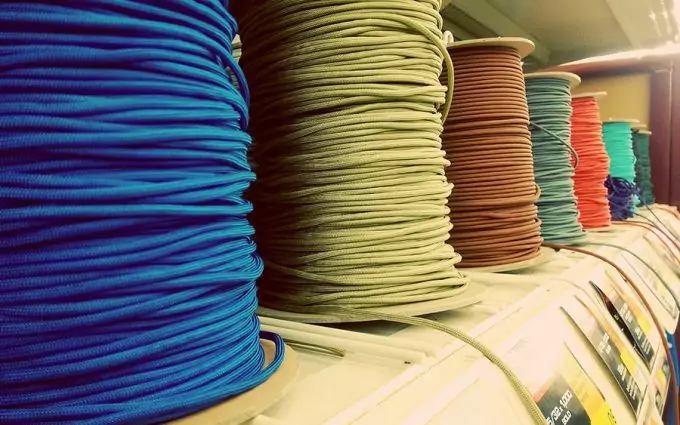
It is however, advisable to have a clue of how to use paracord at home before you get them into your rucksack as one part of your outdoor gear. That way, you are free to explore the uses of the cord when you would possibly need to apply it for survival.
What You Need to Know About Your Paracord
First of all, you ought to know exactly what material you are about to work with, because, having the right supply is key. If you get that wrong, all your efforts are already in shambles right from the very beginning. A good way to get that sorted, is by checking to see that all the salient things that make the real paracord unique are found in the utility cord you are about to acquire.
The unique features of a real 550 paracord may be easy to find after you have known them or refreshed your memory by reading this article. However, if you do not know about them before now, beware, they can be very tricky details that could easily ruin your choice of gear.
What to Find
Paracords are thin cords with about seven inner strands for each, that are composed of interwoven strings, covered with a top sleeve that is wrapped around the inner strings. They are actually made that way to withstand pressure and increase their break-strength. The common is for measuring their break strength is usually in pounds.
The strength of parachute cords during World War II was about 550 pounds, which is why it is called 550 paracord. Some veterans do say they that these cords are battle- and time-tested ropes. Not only because they were originally used for battles as parachute cords, but because over time, they have been used for several other purposes by soldiers and paratroopers in survival situations.
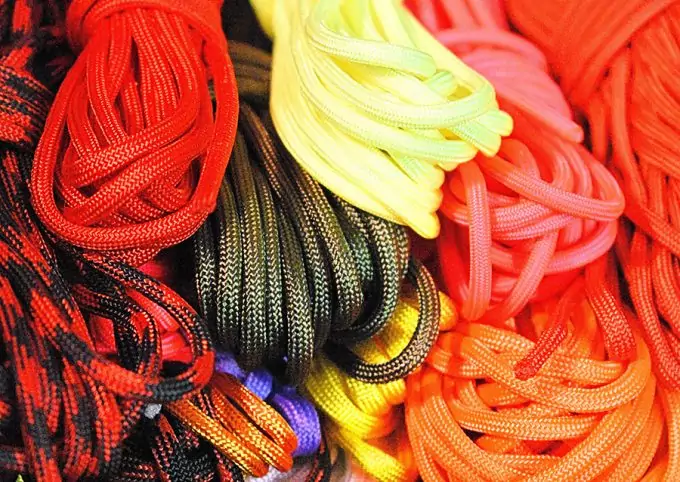
Paracord uses are evident of their versatility. That has made them very popular among civilian voyagers and wilderness explorers over the years as well. They have applied some basic skills and transformed the cord into parts of survival tools, such as for building traps for fishing and hunting. They have also used it in building shelters and applied as tools for climbing, repairs, medical crises ,and for general hygiene. For more information on what to bring in your next camping trip, read our article on the topic.
How to Use Paracords
Paracord uses are limitless; if it has not been done, then it just hasn’t been thought of yet. So, how to use a paracord basically depends on the need. Wilderness explorers will agree that you use what you have to get want when in the wild. But you need some basic skills in order to do so, or even to think in that direction.
A few distinguished and common examples of how paracord have been frequently used might influence your thought pattern into a path that could make you a Paracord DIY pro, or give you an eye to cherry-pick great paracord applications, or even modify some methods of application and crafts to suit your own interests.
Paracord can be used as:
Apple Bags. Paracord bags are usually airy, as they are fondly designed with large holes, knotted at the edges of their rectangles or slanted squares. They are very good to store apples or all other domestic fruits that would need enough air to stay on fresh and crispy. No matter the amount of fruit or vegetables you stuff into the bag, you can be rest assured that it will not break, and secondly you can easily monitor the fruits to use them just before they go off.
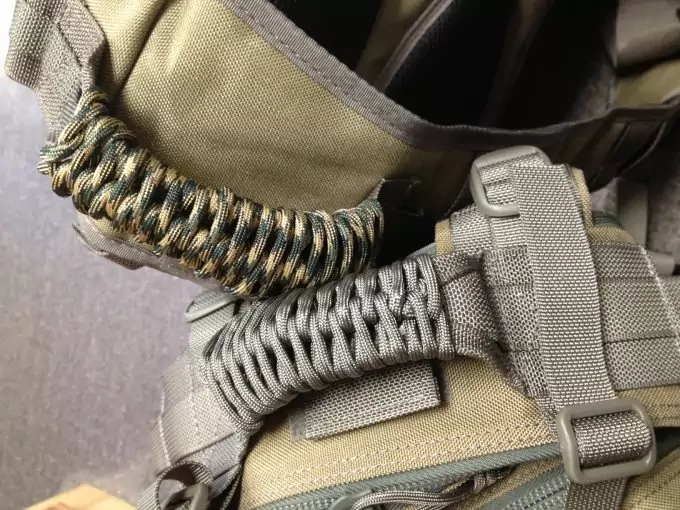
Image Credit: pinterest.com
Backpack Strap Wrap. As a wilderness explorer, you would find that sometimes you have just carried much more than is required for your trip. Probably because you got a bit indecisive, or just because you do not want to miss any important detail and then your backpack gets bulky, untidy and heavy.
Now you are not sure if your straps would last through all the hikes in your trip. Paracord backpack strap wraps can just be used to save the day. They can boost the durability of your backpack straps, if you wrap your paracord neatly around the straps. They also appear stylish to other paracord lovers.
Slim Pouches. A multipurpose slim pouch is one of the most important gear an outdoorsman would not want to miss while preparing for any adventure. It is a very important tool, and can be useful for various purposes when the need arises.
It only wise to always have atleast one. A paracord slim pouch would just be an ideal pouch to have with you at all times. In fact, not just in the wild, but wherever you are. You can protect anything from key-holders to several types of locks, stylishly in it.
Lanyard Holders. Keys and whistles and sometimes multiband tools are better reserved together. So, lanyards are typically used to protect and keep keys together. Currently, a fashionable and easy way to keep your keys together and also send a statement to your peers as a wilderness enthusiast, is by the use of a Paracord Laynard. In fact, they are also used as holders to several items now. Ranging from identity cards, to badges, and pen-knives. Interestingly, you can also add some sort of a modern tracer to keep your item traceable and even more easy to find when misplaced. Check out our DIY instructions on how to make your own lanyards and see how easy it is to craft.
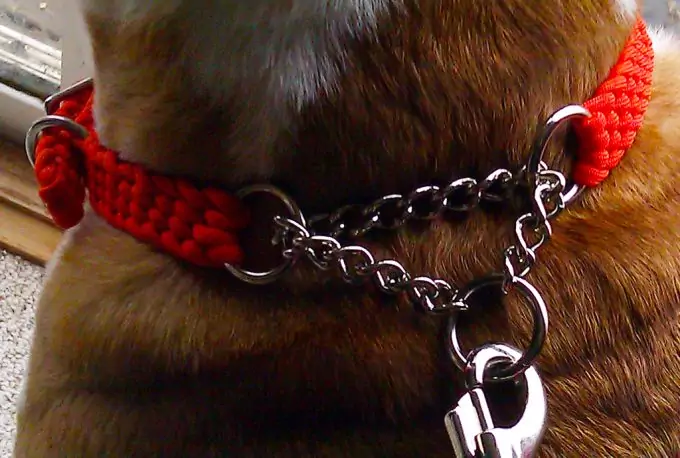
Dog Collars. Paracord can be weaved neatly into slim collars that are suitable for dogs. The beauty of this type of collar is that the material of which it is made from are very durable, and the collars can have different colours too from the combination of varying coloured paracords. With only about 40ft of paracord you can actually make a fine but very sturdy collar.
Waist Belts. Some trousers or pants as the case may be are one of the priceless, rugged, components of the outdoorsman’s gear. So, a rugged waist belt to match their ruggedness is just what you need, especially when you are someone who hangs stuff on your belt line. Paracords are used to make such handsome but tough belts that can last beyond leather belts and serve you better then you can imagine.
Leatherman Pouches. These are typical traditional pouches that are used to keep close very valued gadgets such as pads, phones, touches, and handy equipment. Unlike the slim pouches, these Leatherman Pouches could be designed to hold items that can be ordinarily be kept in probably leather pouches to retain them close-by.
Fishing Line. This is actually amongst one of the most commonly recommended uses of paracord. Using the paracord as a fishing line, is a long time emergency trick that has now become a welcome trend for fishing enthusiasts in love with paracord.
But here, you would need some basic tools like a knife to get into the cord and extract a single string, up-to the length of thread that you need. Attach it to your hook, and then the other end to your stick in the right way, and you are ready to fish in the wild. Make sure you have the top knives for hiking and camping, as listed in our article to help you cut those sturdy paracords.
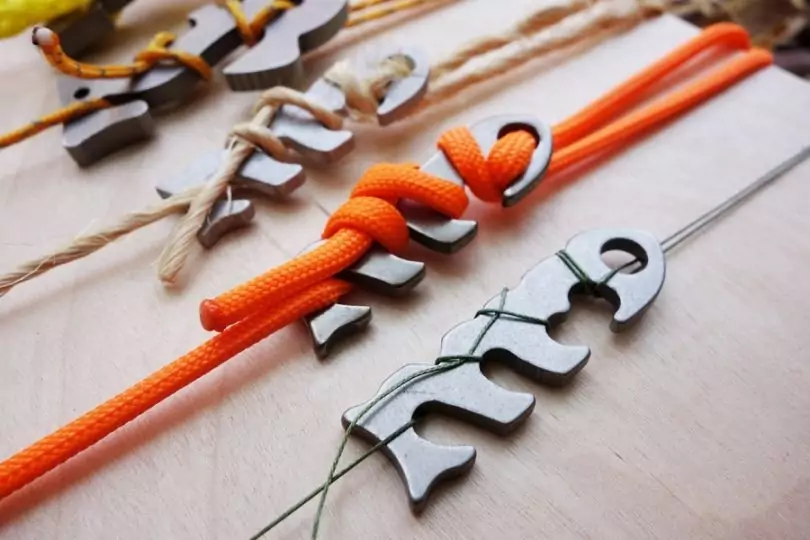
Image Credit: fishbonefish.com
Fishing Nets. These are usually built into scoop nets with which you place the net in a river, but against the tide and just scoop it from time to time, or built into barricade nets where you position the net to cover through a stream, from side to side and down to its bottom to prevent escape of the fishes and pull the nets after a while with fishes that are stuck in them.
Snares. The durability of the rope makes paracord a fantastic tool for setting traps. It is a joy to be able to ensnare a life animal and decide what to do with it right from the catch all by yourself. The strength of the rope can keep the animals from escaping, no matter the size, so long as it is well fastened unto a solid post.
Also, since the they are not too sharp, they also do not cut off any part of the catch. You are most likely to meet them whole and alive.
Shelter Lines. Paracords are great tools for building shelters in the great outdoors. Especially in putting up the traditional tents. The cordage is just what you need to withstand any sort of weather condition. So long as your tent is strong enough and the attachments are right, you need not fear the storms of the night and day. You may never be in tent that will get cut-off and blown away if the winds go wild when you are using a paracord to hold it emplace. See our useful article on how to build your own tarp tent in the wilderness with the use of paracords.
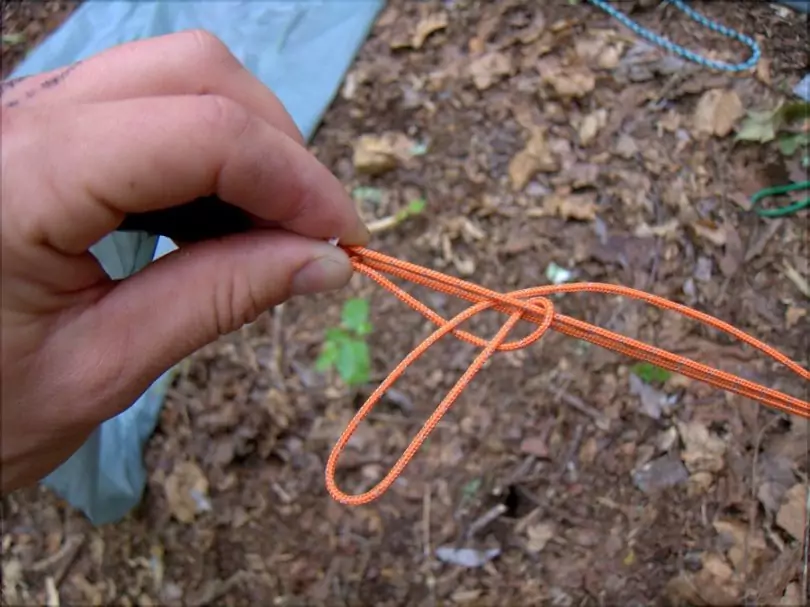
Image Credit: mayake.wordpress.com
Attraction Bags. Commonly called bear bags, these could be made directly with paracord, or protected by paracord bags, i.e., when you place your original bear bags within the paracord bag, or also by merely using the paracord to hang the bag on a height, high enough to protect your bag.
Fire Bows. This is essentially a life saver if you can do it efficiently and you happen to find yourself or your team in a position where you need a fire desperately. It requires tact and experience though; you will definitely need some other tools to make this happen. These will include tools such as: a fire board, a drill and a socket cap, a bow, and of course your paracord.
Our article on DIY paracord bracelets is a must-read and will provide instructions on how to make this fashionable survival tool.
The Essence of Quality
Paracord crafts are desired mostly for the strength of the material. So, in order to maximise the potentials of a real cordage, you need to know how to use paracord as a gear and how to identify a top grade, real cord. In this case, if you want to make some paracord gear by yourself, there are plenty of helpful instructions online to guide you through the process.
There are lots of commercial paracords in the market. These are not ‘the top quality’ paracords. The top quality paracords are Military Spec paracord, and they are made of inner layers of about 7 – 9 strands, and a quality outer layer of nylon material.
The strands are also made of 3 nylon yarns that stretch all the way to the end of every cord. That being the case, you will have 21 – 27 individual yarns altogether, if you totally loosen the inner part of a Mil Spec paracord. Most importantly, make sure the material is 100% nylon, that way you will not be far from the real stuff.
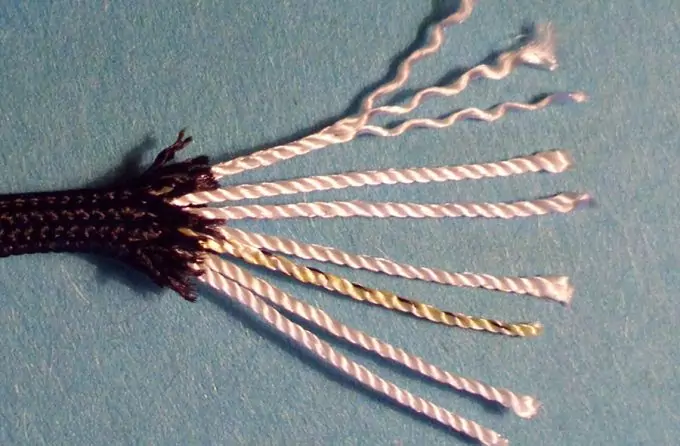
However, in order to be sure you are about to purchase the right stuff, here are a few ‘reliable checks’ to look out for:
- Check the amount of the inner strands: It must be at least 7. Anything less is less than Military grade paracord.
- Check the colour of the inner strands: A combination of colour-coded inner strands is required for tracking Mil Spec cordage, and also for the purposes of quality control.
- Check the label properly: The ideal Mil Spec cord are properly labelled and classifications are specified. Avoid labels such as Mil Spec, Mil Grade, etc., but look out for such; ‘MIL-C-5040’.
- Check the coupling of the inner strands: Three (3) stings make up each inner strand, and they are always twisted to enhance strength and reliability of the cordage.
- Check the smoothness of cordage: A combination of tight, dense weave, and smooth twist are what should expect in a Military Spec paracord, because the military has a specific weave and cabling standard that is to be followed strictly.
- Check the measure thickness: 550 cordage has the overall diameter of 5/32”.
- Check the quality of material: A top grade Mil Spec will always be 100% nylon. Avoid anything less. Because it might just deteriorate after it has been used a few times, if it is not 100% nylon.
Finally, it is obvious that paracord uses are vast and numerous. So, all you need to do is learn how to weave the cordage into neat collections and get creative in order to satisfy your desires. The main thing is that the material is durable and reliable. Because of that quality, you are sure it can be used to fill in the gaps for several needs and also to save lives.
Have any great crafts that you’ve made with paracord? Feel free to share your stories below in the comments section.

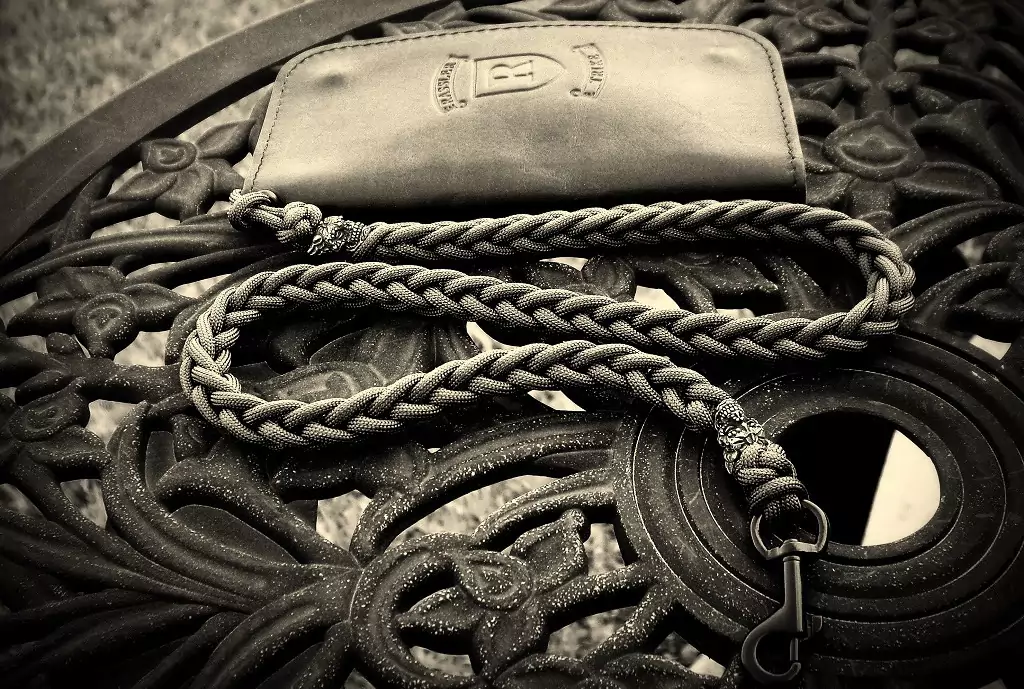


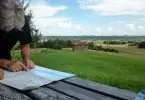



So far, I’ve only attempted the basic bracelet, although I keep a generous length of paracord in my camping and hiking gear anyway.
Thank you for pointing out the composition and construction of the paracord. I didn’t realize there were different qualities.
While a length of string is necessary for something almost on a daily basis (broken shoelace anyone?), I would point out that paracord can be a good part of a first aid kit as well for tourniquet use.
When I was starting out, I was not convinced that the paracord is useful – seeing it as a mere accessory and nothing more. That all changed when I had to use it as a shelter line due to very strong winds. After that, I read on every imaginable uses that this cord can help me with.
I now view this simple paracord with great respect.
I think a paracord is something you think of as trivial until it gets you out of an emergency. I’ve read somewhere that astronauts even used a paracord together with bits of other materials to help repair the Hubble Telescope’s torn insulating cover. The idea for this came from a person in mission control who learned about some knots used for his tent during a vacation!
Wow! The skills we learn do come in handy when the situation calls for it. I’m always happy to hear good news and that’s why I always encourage would-be campers, trekkers or just about anybody to learn some basic survival skills such as making different knots for paracords, ropes and other useful stuff.
You’ll never know when these will come in handy.